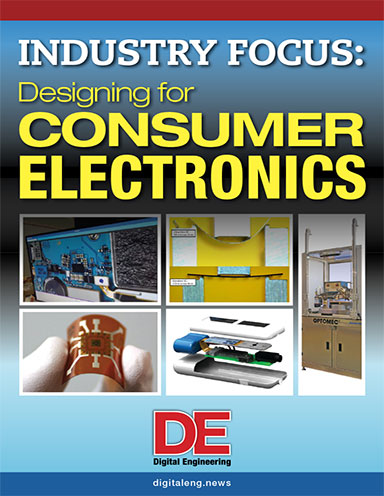Industry Focus: Designing for Consumer Electronics
This digital issue features rounds up DE’s recent coverage of design engineering technologies relevant to the consumer electronic industry, including MCAD and ECAD collaboration, machine learning in EDA tools, electronic 3D printing, thermal simulation in

February 16, 2018
Design engineers developing consumer electronics were some of the first to arrive at the intersection of hardware, electronics, software and aesthetics. That intersection has since become jammed with engineers from various disciplines trying to navigate their way through an ever-changing “smart” product landscape filled with new sensors, electronic design automation (EDA) tools, communication protocols and embedded software.
Keeping up with the demands of digital disruption, often with even shorter product development timelines, affects every aspect of design engineering. New workflows are needed to help engineers from different disciplines communicate and collaborate with colleagues up and down the product lifecycle. New design tools are needed to help integrate mechanical, electronic and software components into systems that can be simulated accurately. New prototyping, testing and manufacturing techniques are needed to keep pace with increasingly complex products. And, especially for the consumer electronics industry, immersive digital design tools are needed to help design engineers see what the product will actually look like in the real world while it’s still on their screens. Consumer electronics need to do more than function properly, they need to look great and provide consumers with an amazing experience to succeed in a very competitive market.
On the horizon for many engineers, but already a reality for most involved in consumer electronic product development, is the integration of—or reliance upon—artificial intelligence. This was apparent at CES 2018 where AI seemed to be demonstrated in every type of consumer product, such as voice-controlled devices connected to the AI in the cloud for their “smarts,” or wearable devices that track and compare all manner of data points to provide a personalized experience, or washing machines that recognize the clothes being washed and adjust accordingly.
The articles collected in this special digital issue focused on consumer electronics cover collaboration, EDA, sensors, simulation of electronics, AI and more. We hope you find them helpful in meeting the needs of today’s consumers.
Latest News





